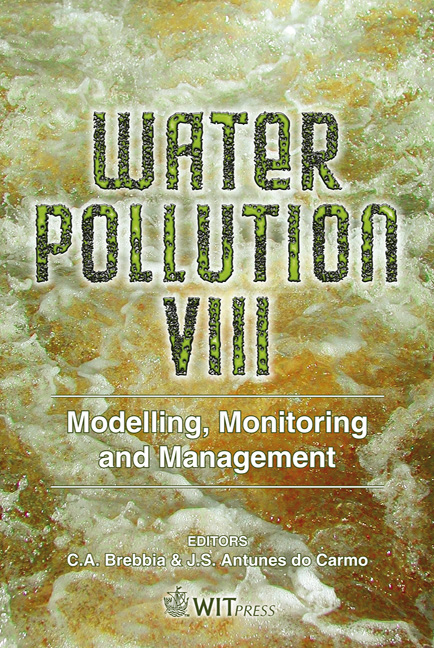Bio-translation Of Aniline In Riverbank Filtration Under Sulfate-reducing Conditions
Price
Free (open access)
Transaction
Volume
95
Pages
10
Published
2006
Size
387 kb
Paper DOI
10.2495/WP060211
Copyright
WIT Press
Author(s)
Y. Wu, L. Hui, X. Li, H. Wang & R. Zeng
Abstract
Soil column was equipped with the sediments and aquifer media collected from Weihe Riverbed and its bank, and was used to research the characteristics of aniline degradation in the riverbank filtration under sulfate-reducing conditions. The results show that most aniline could be degraded, even be mineralized by the indigenous microbes under sulfate-reducing conditions, but had a long lag period. The aniline degradation and sulfate reducing produce some intermediates, some of which are harmful to sulfate-reducing microorganisms. In the test process, aniline concentration in infiltrating water was about 33 mg/L, and in leacate increased from 0 to 22.7 mg/L, then dropped and kept at 2 mg/L or so. Aniline removal rate was 93.94% and total organic carbon removal rate was 62.13%. One of intermediates is H2S the most harmful to the microorganisms. The lag phase was about 14 days Keywords: sulfate-reducing conditions, aniline, riverbank filtration, anaerobic bio-translation. 1 Introduction Aniline is a liquid organic compound that both toxic and carcinogenic. It is degradable, and its half-life ranges from 5 to 10 days in water under aerobic conditions. However in soil environmental, aniline is degraded noticeably slowly, and its half-life is around 350 days. The same degradation process occurs in soil as in sediments, in an aerobic upper layer of sediments, the half-life is also around 350 days. However, in deep, anaerobic sediments, aniline degradation is much slower and its half-life is approximately 10 years [1]. At present, the annual production of aniline is more than 80000t in China, and the
Keywords
sulfate-reducing conditions, aniline, riverbank filtration, anaerobic bio-translation.





